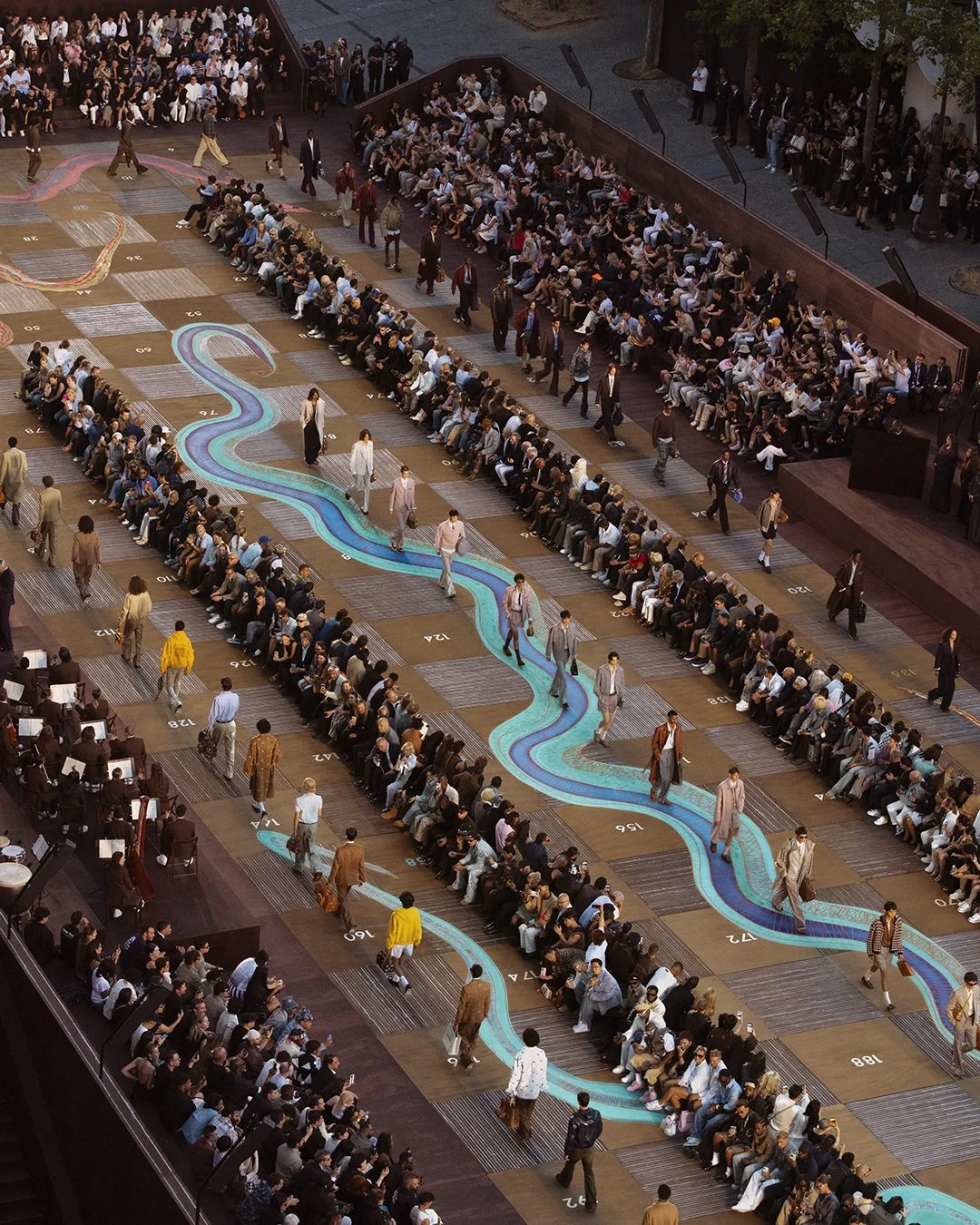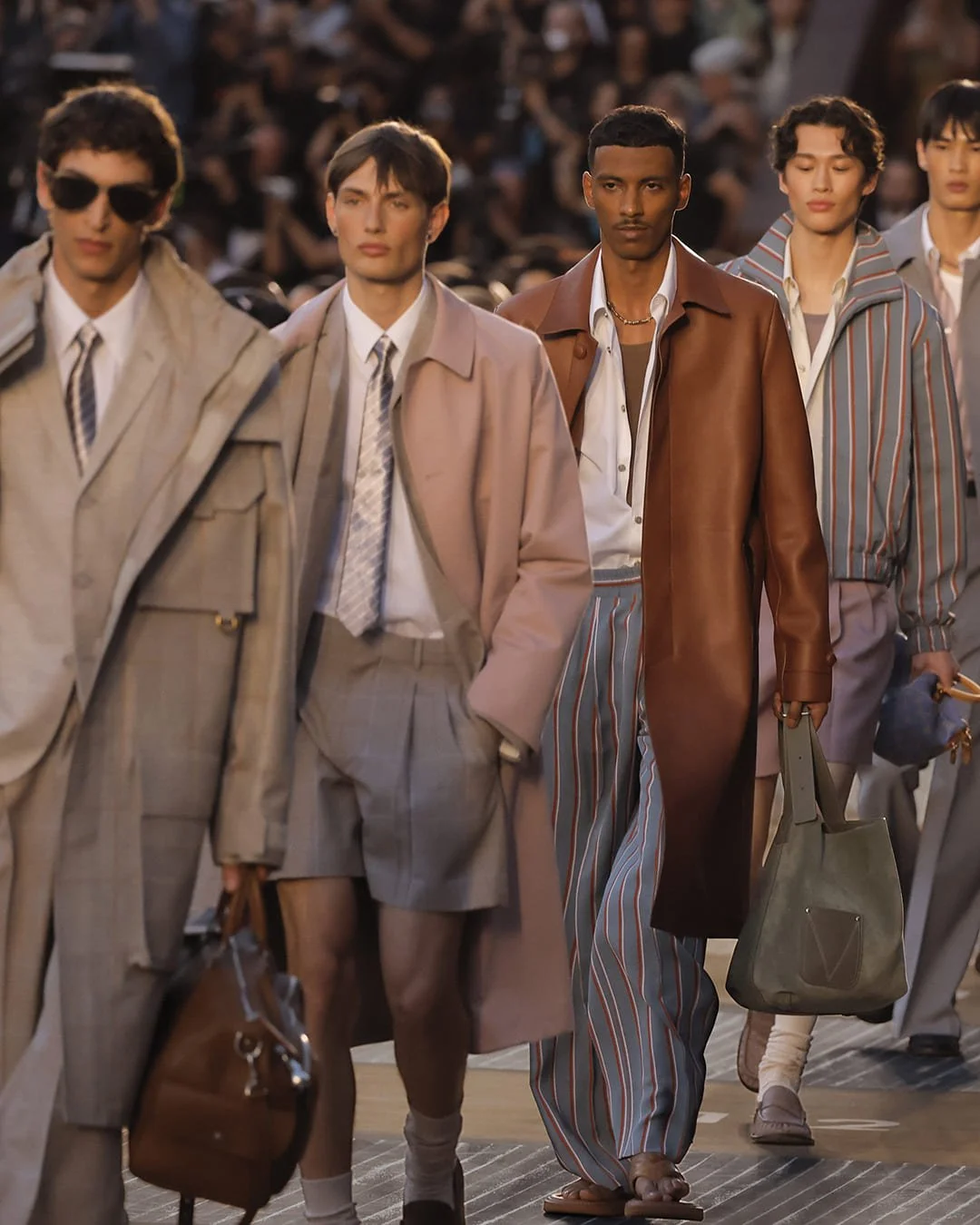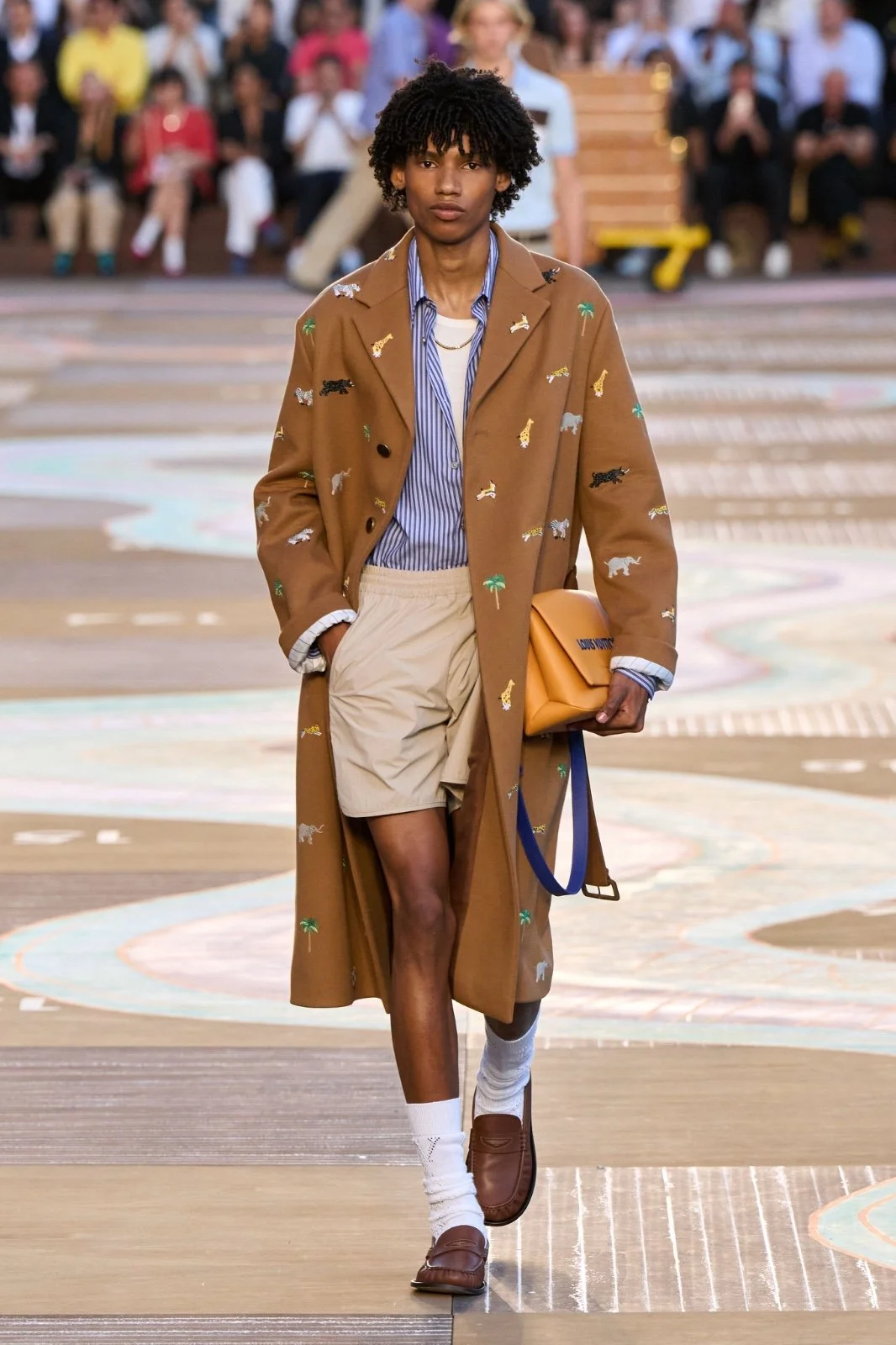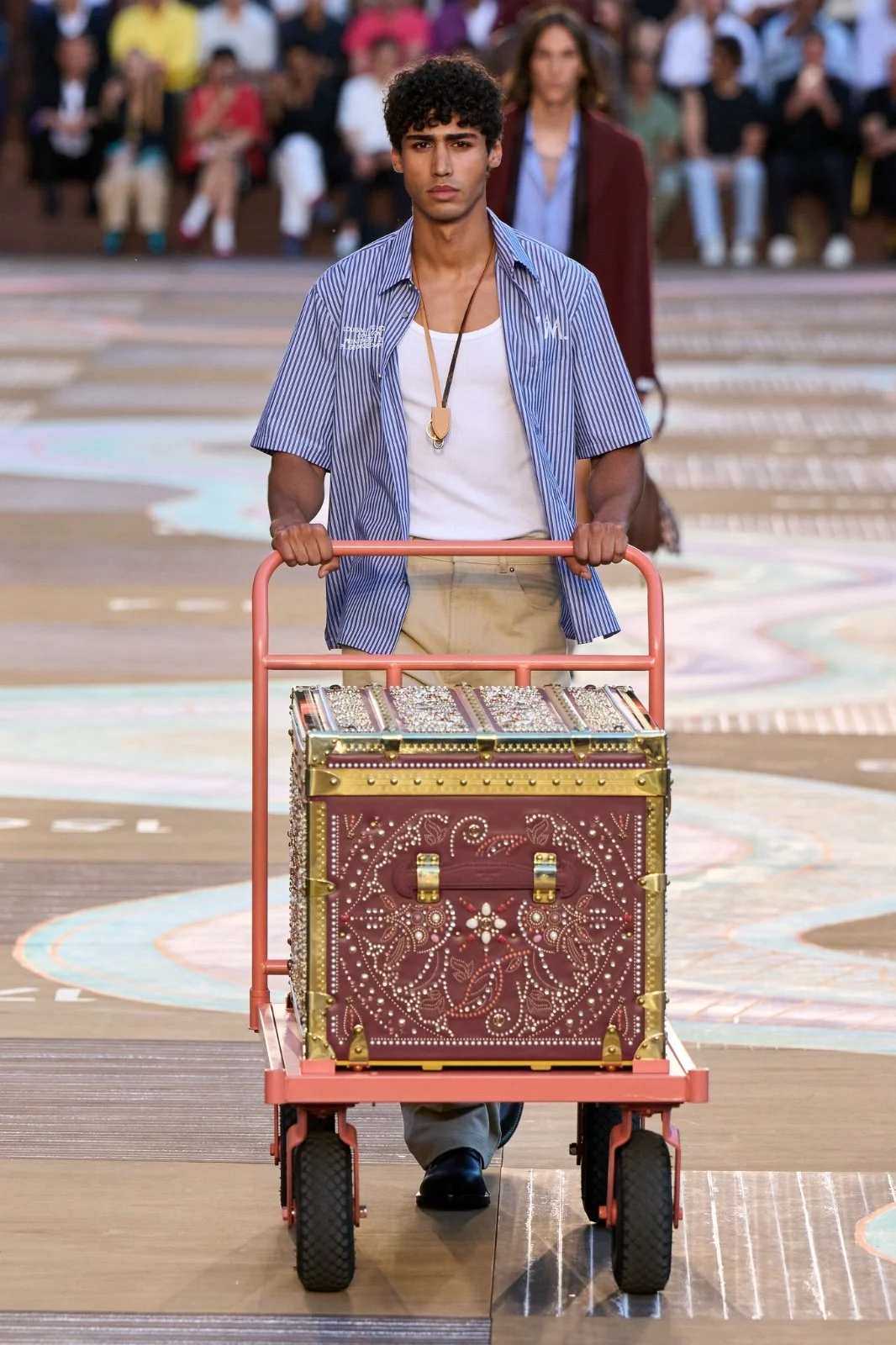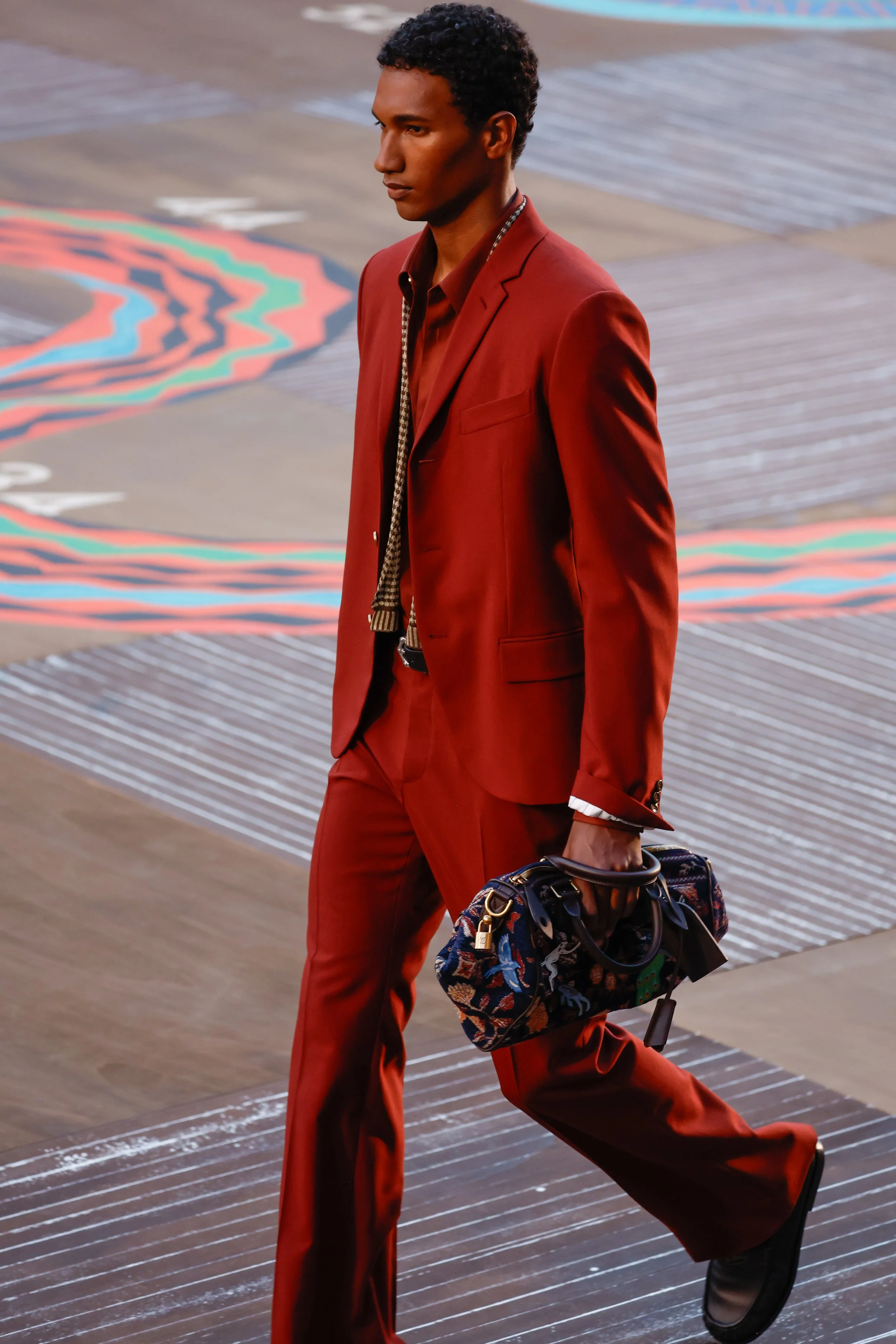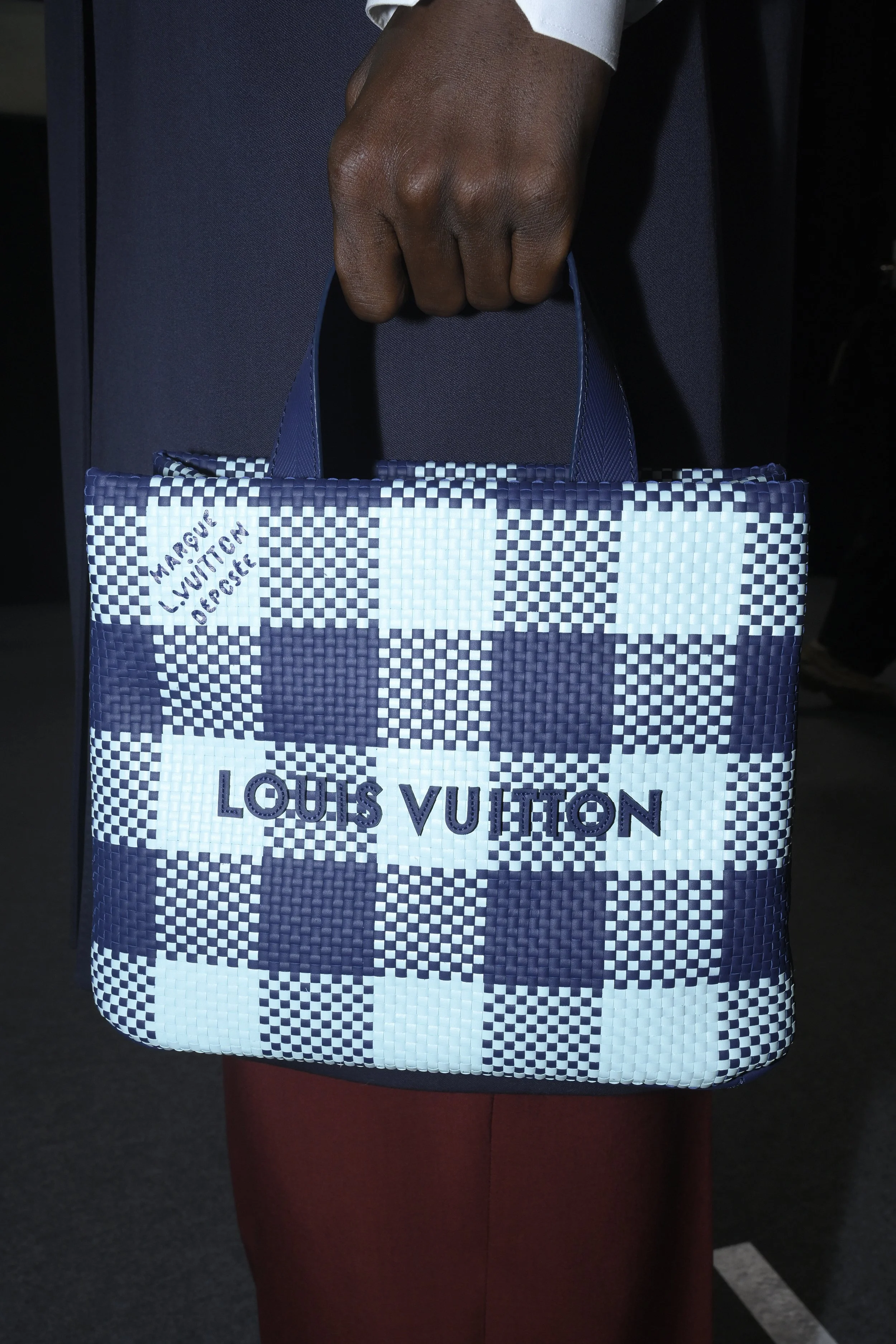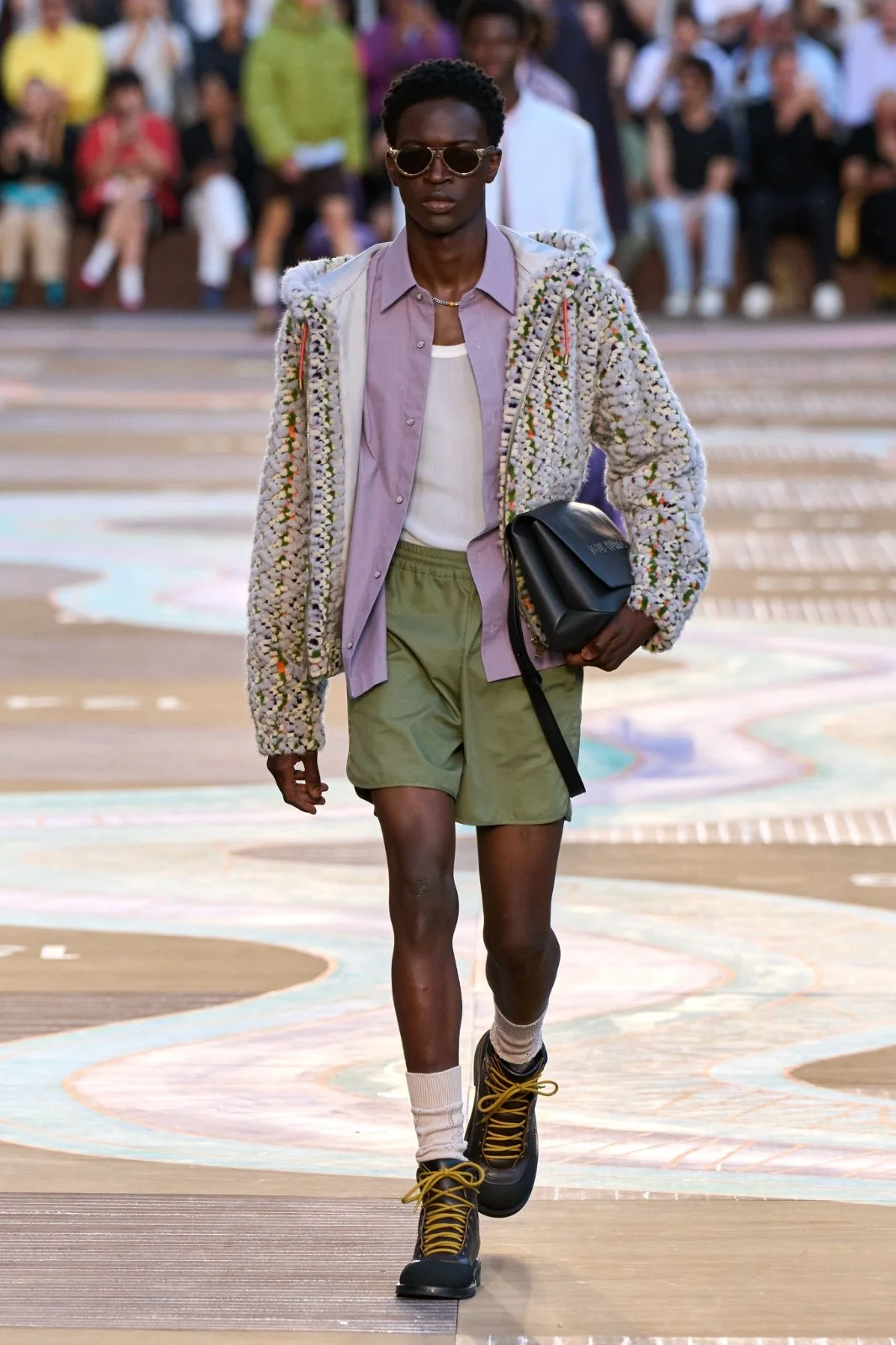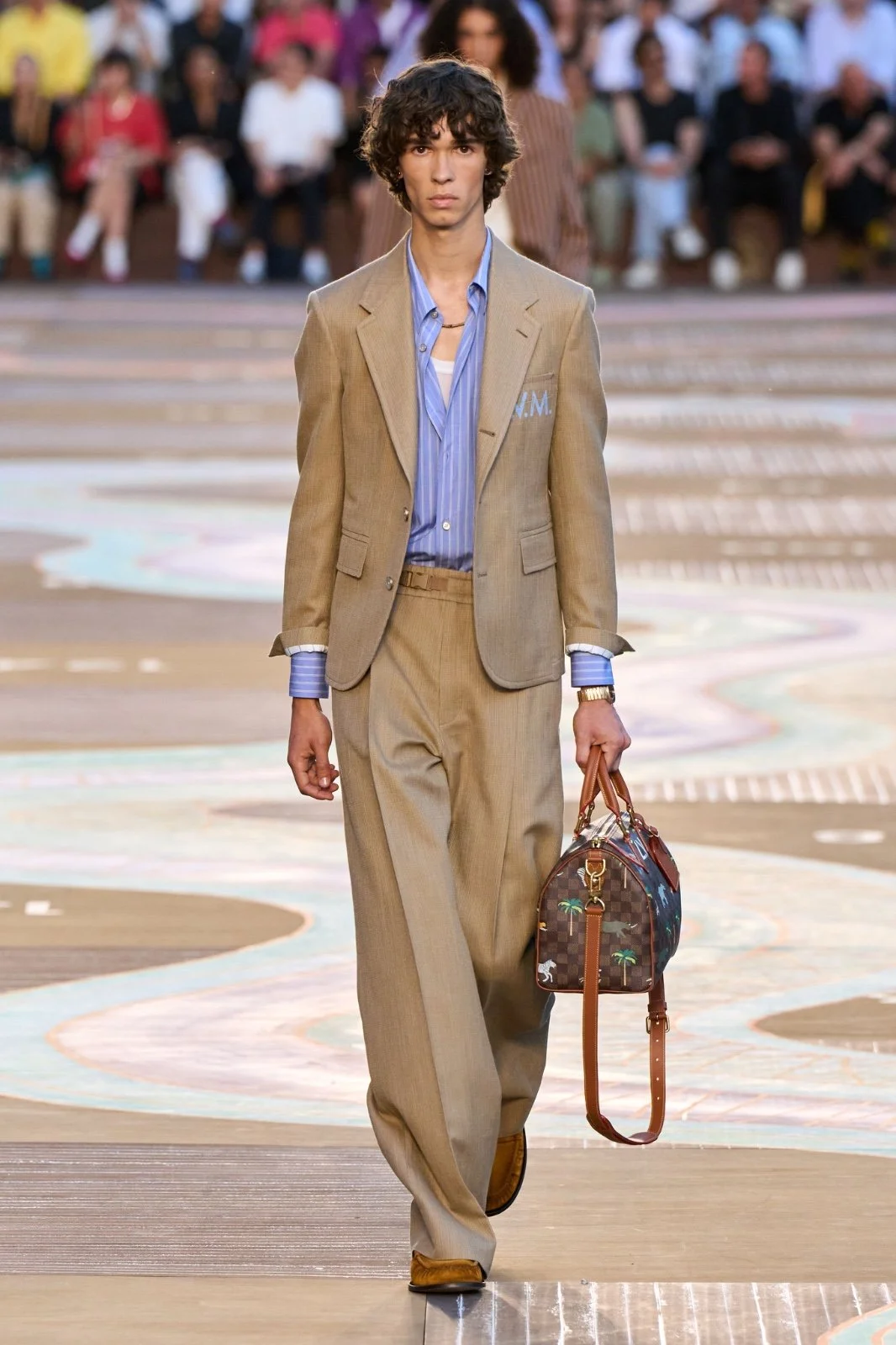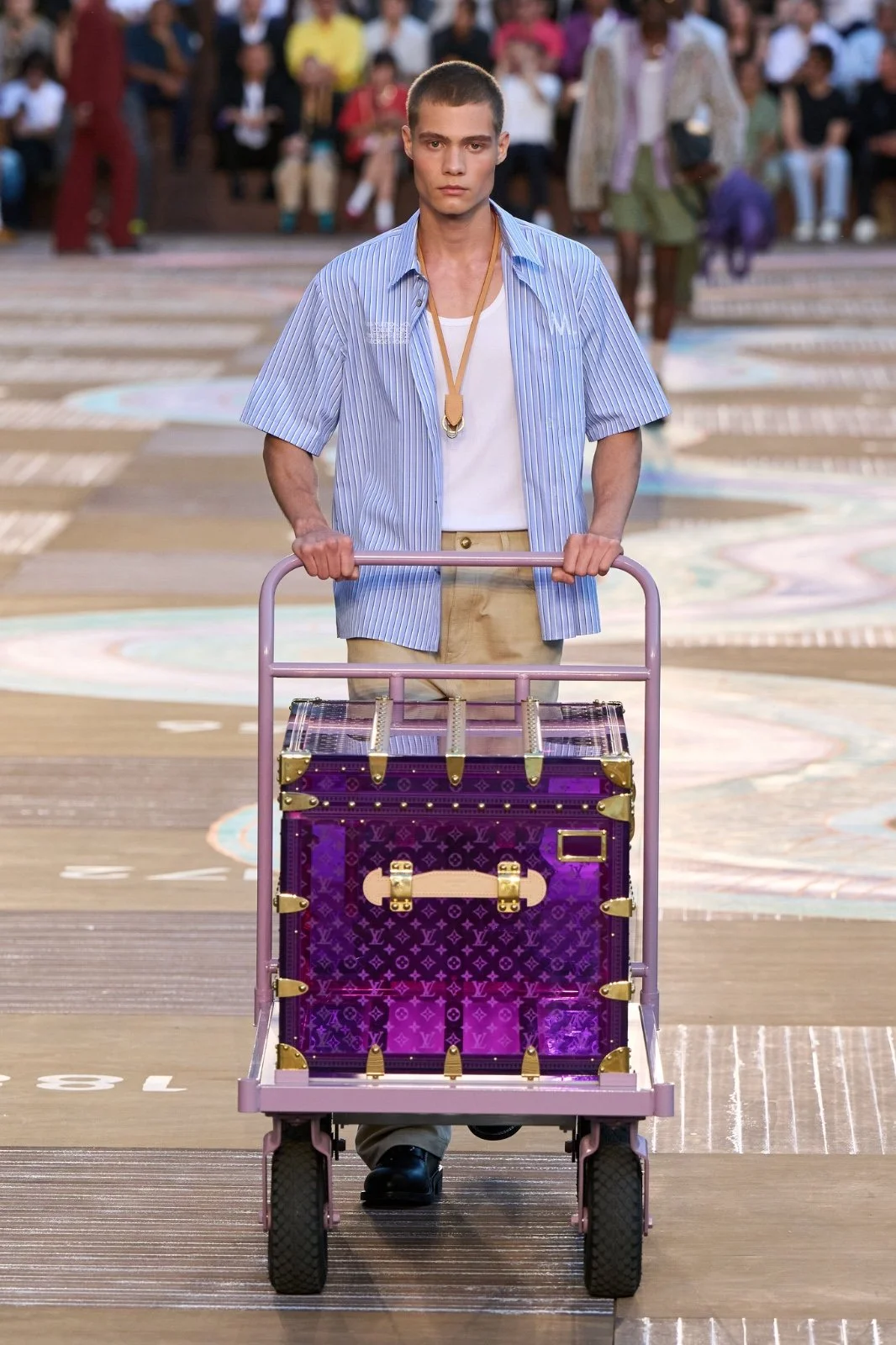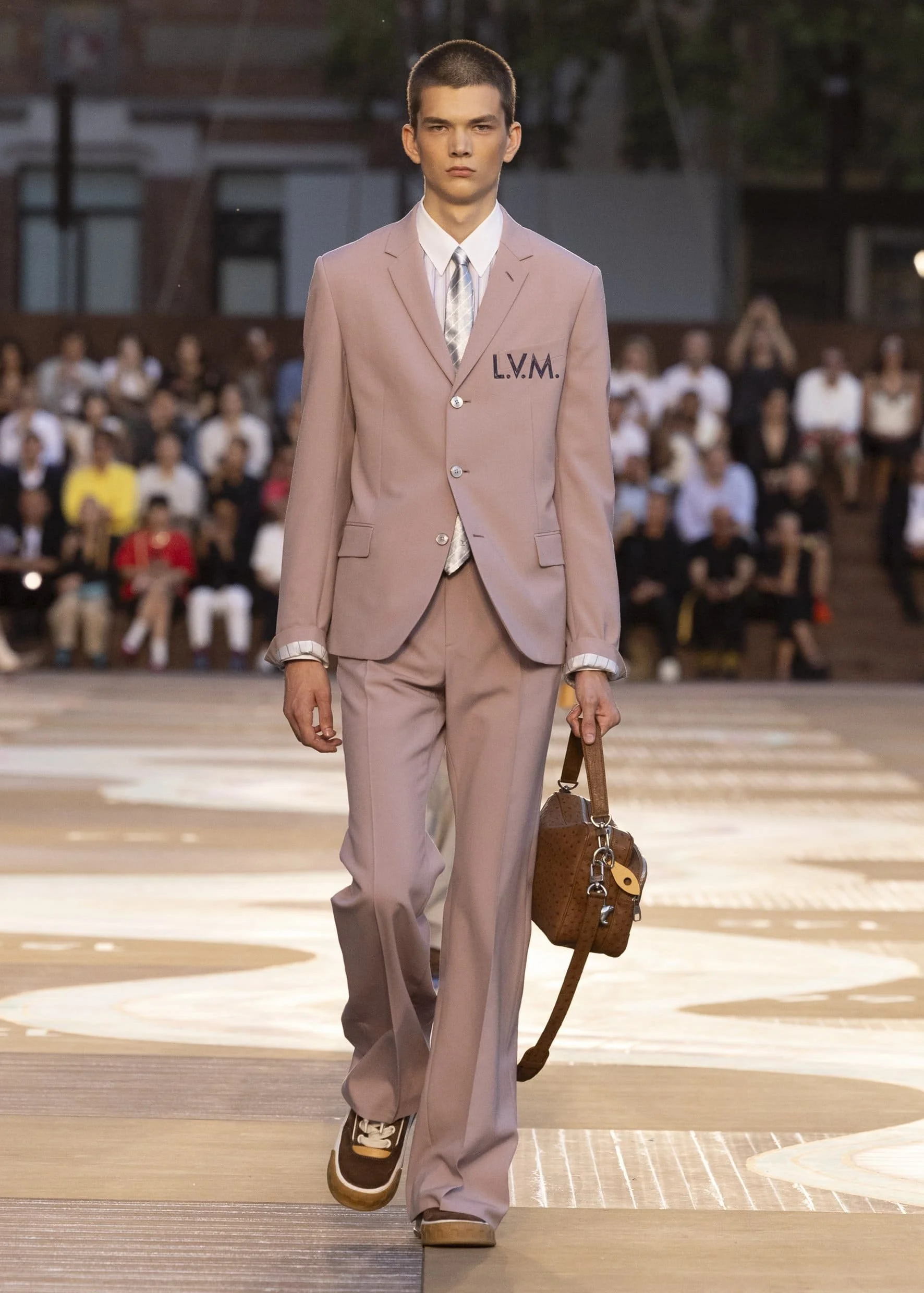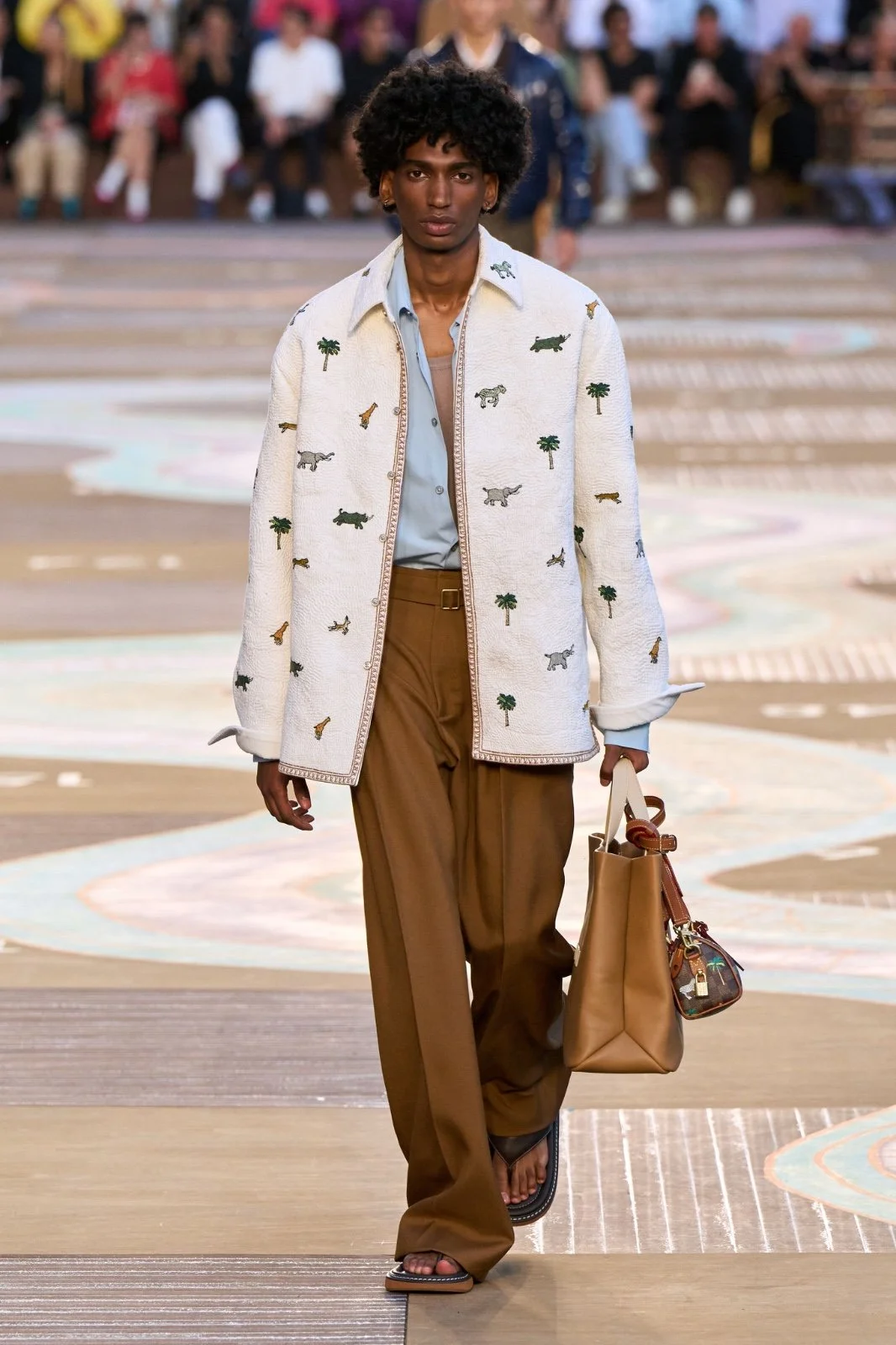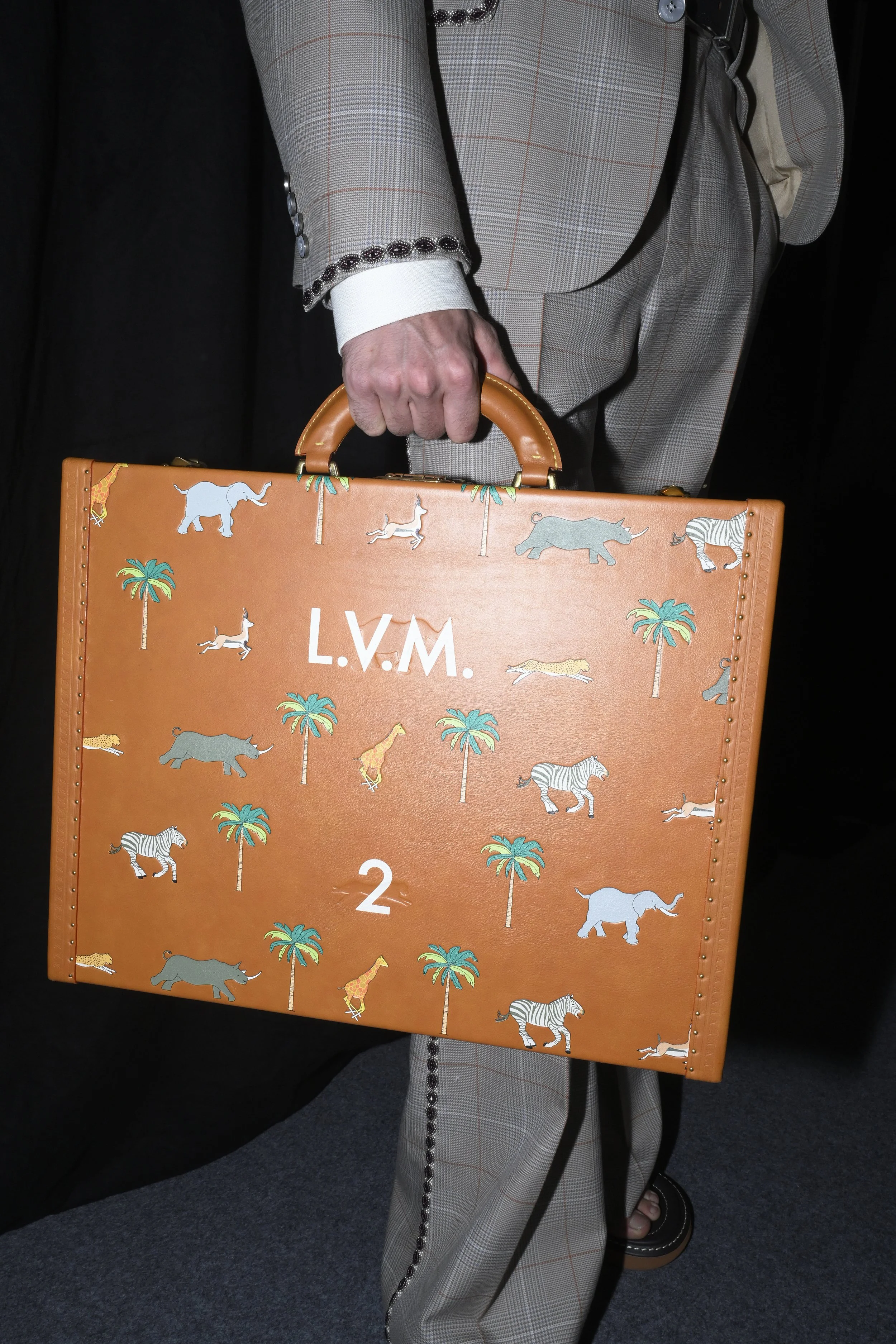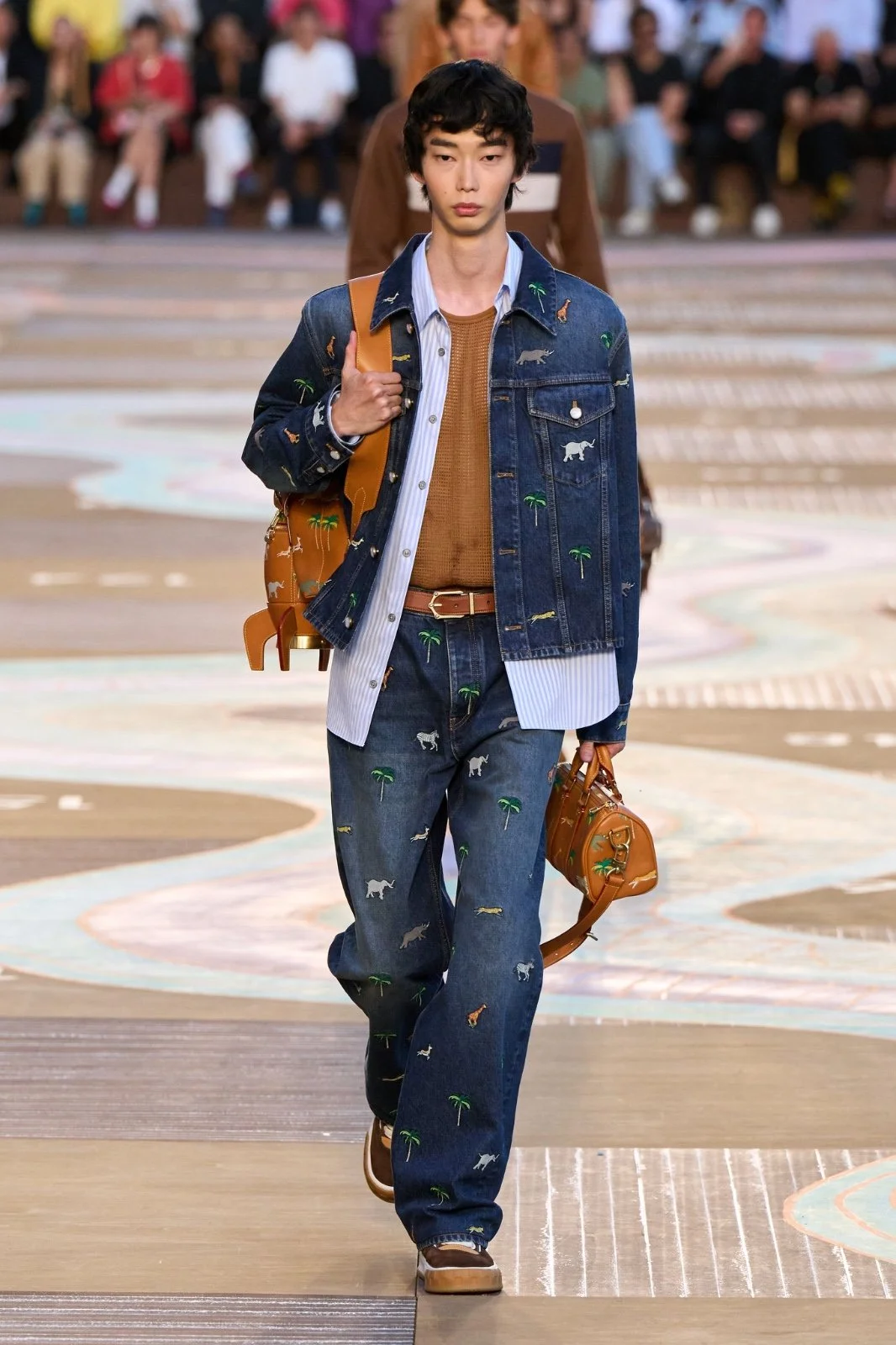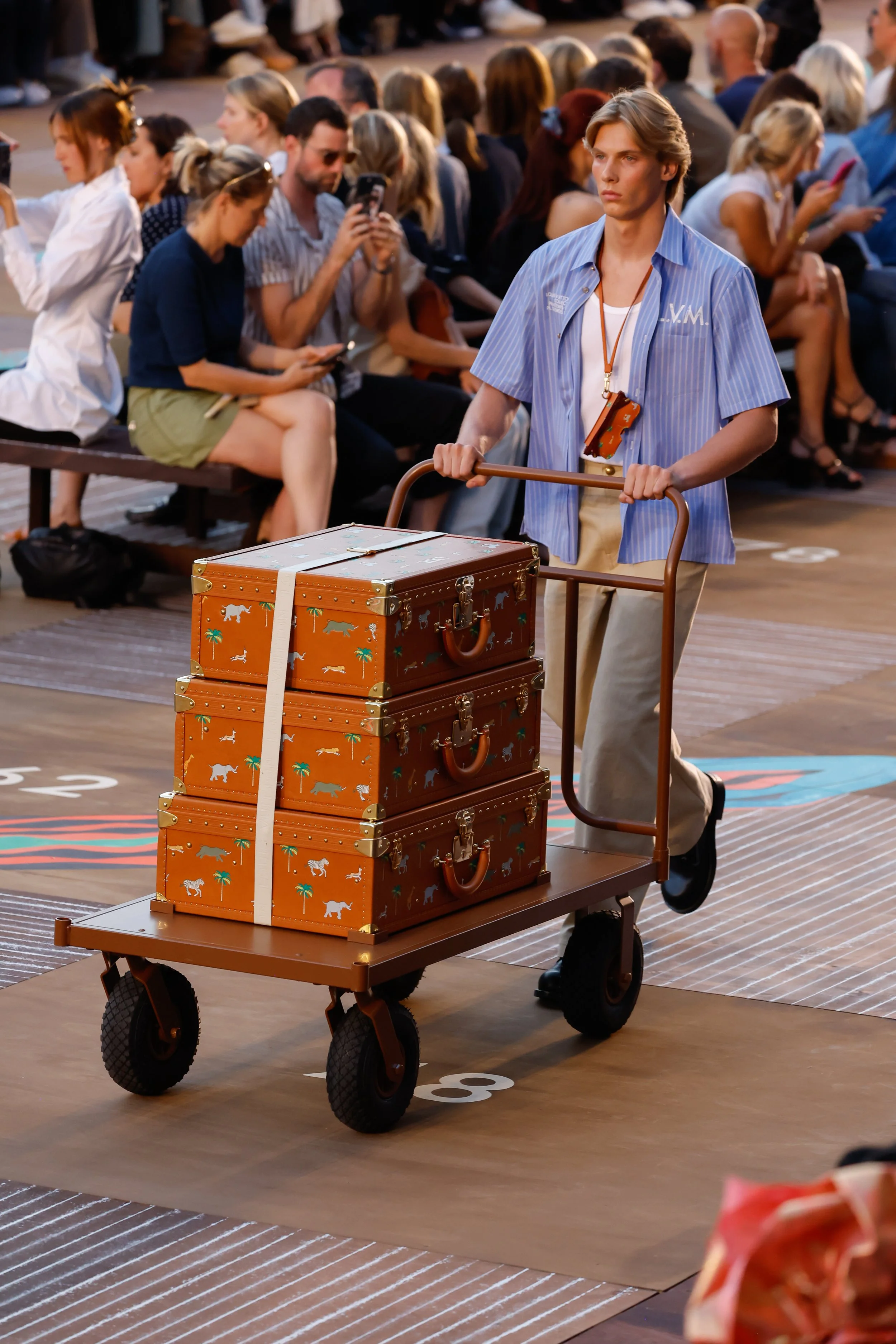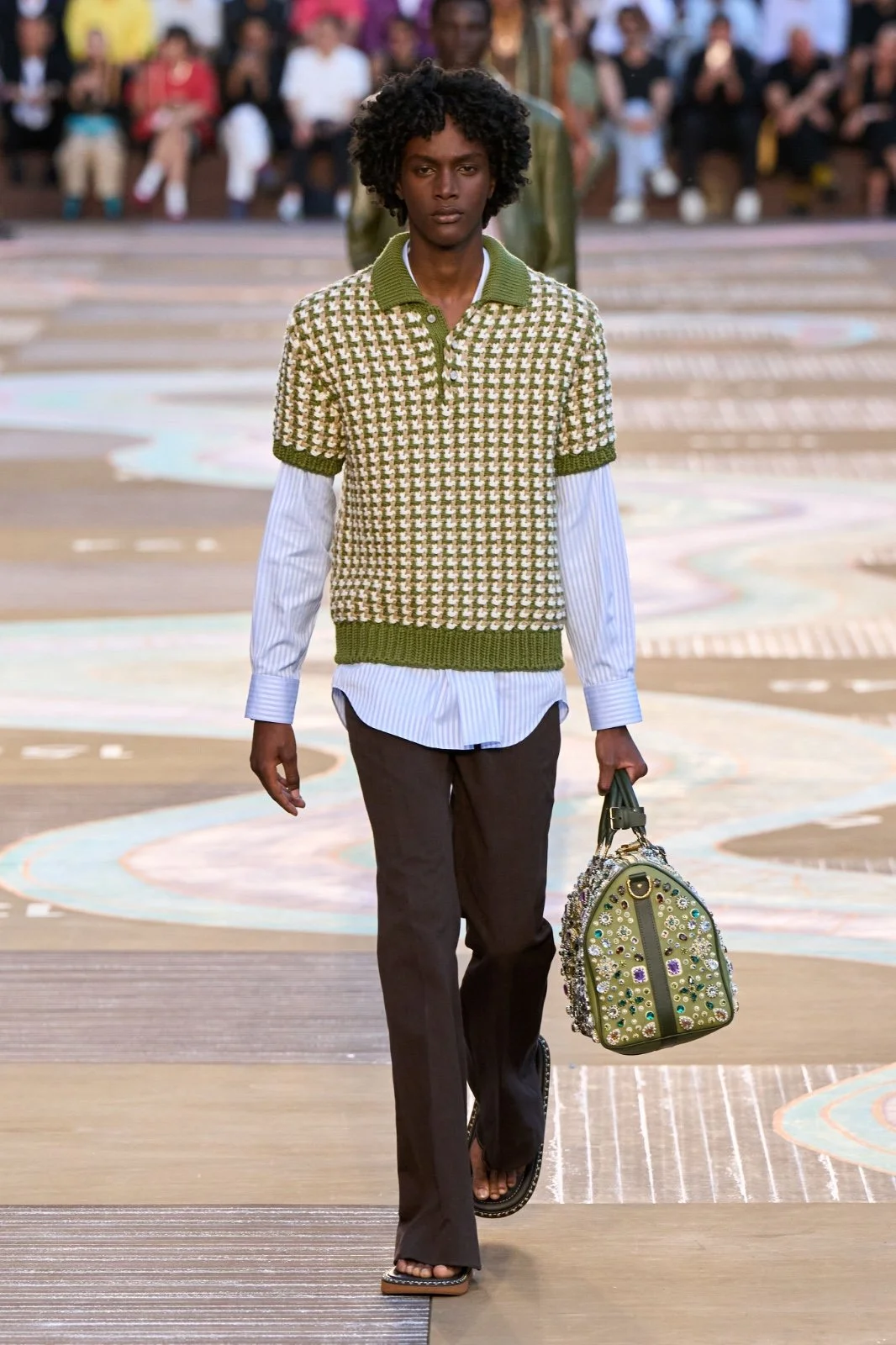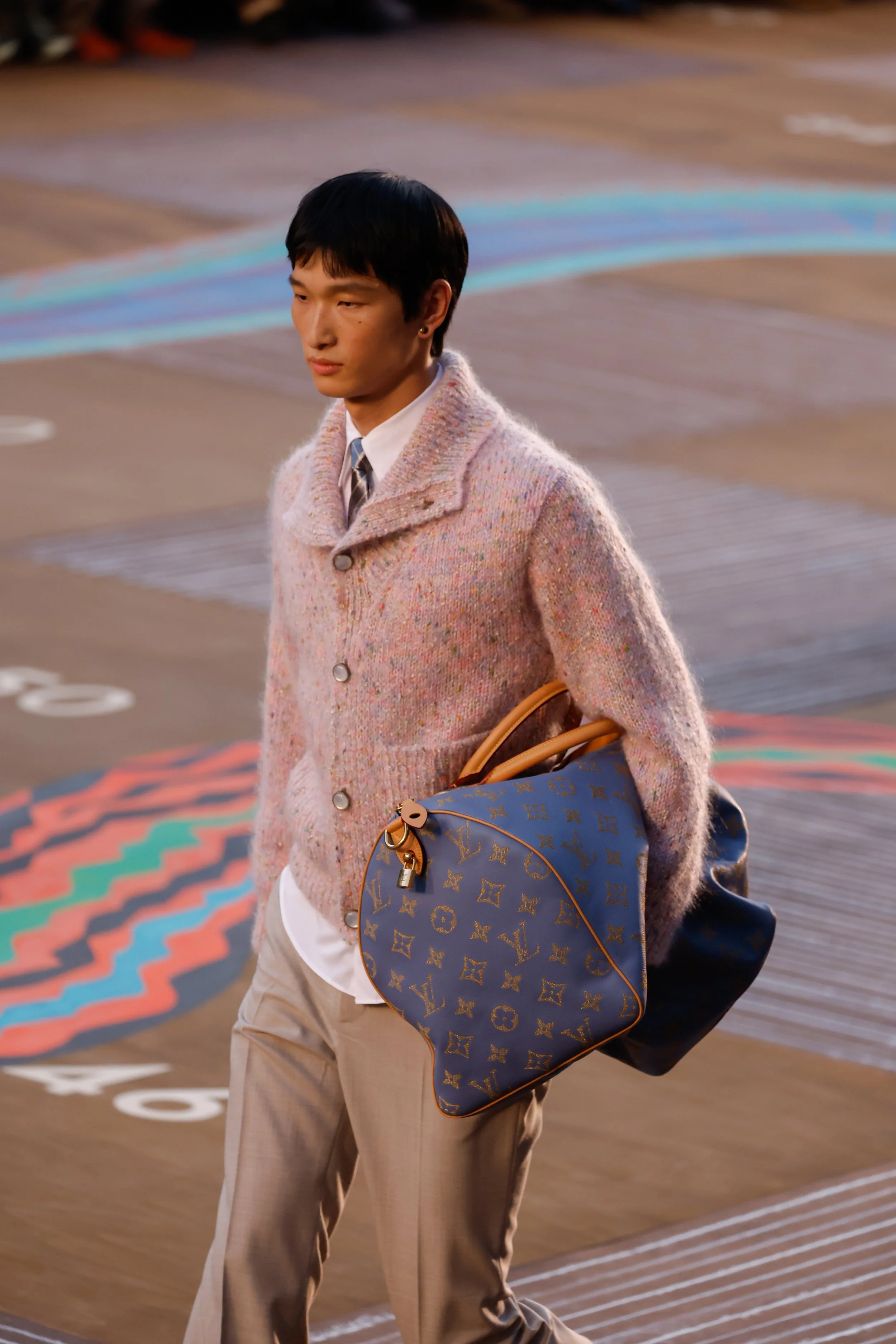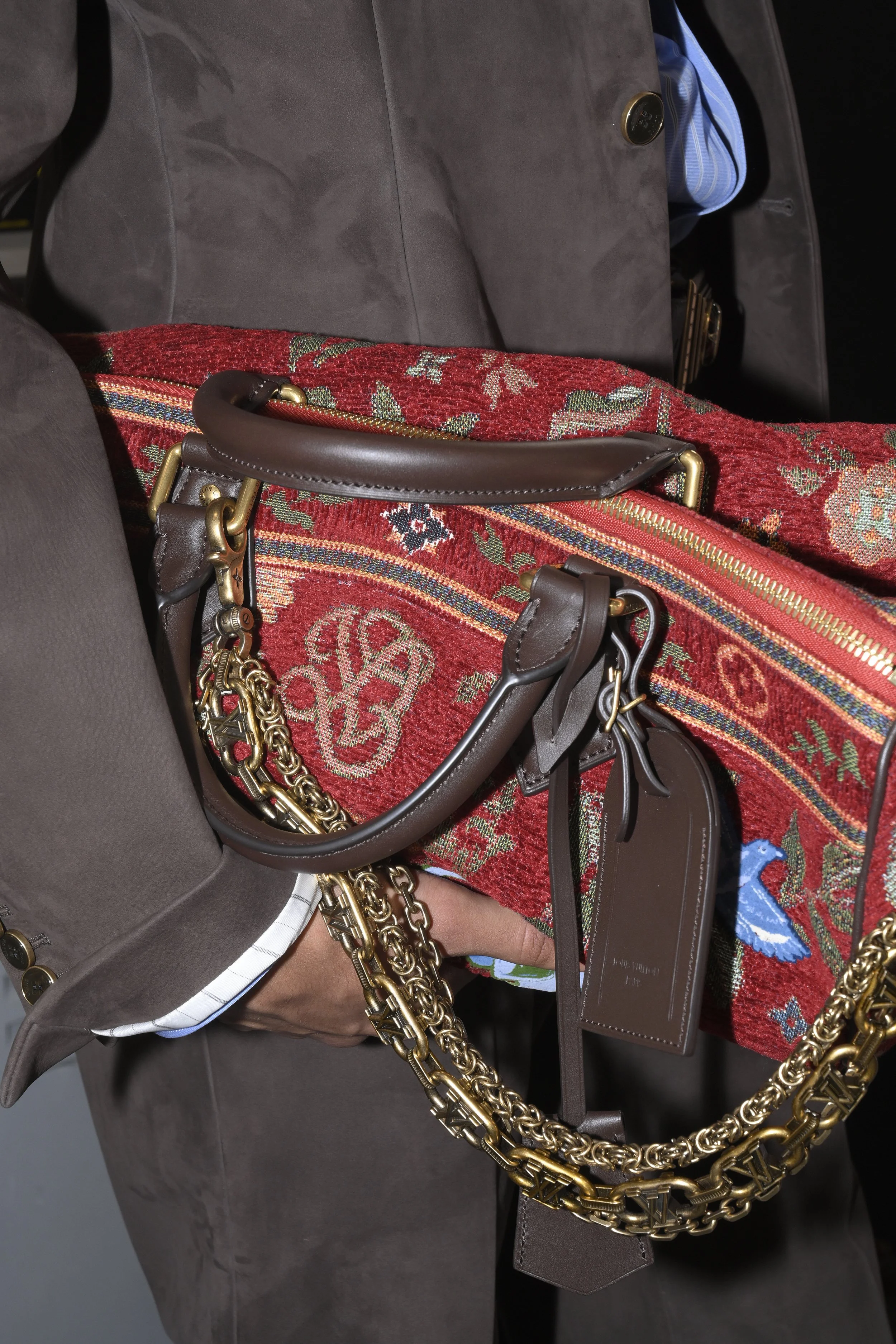With a hand-painted Snakes and Ladders set, coffee-hued denim, and cinematic embroidery, Pharrell Williams' SS26 collection for Louis Vuitton reimagines India not as spectacle, but as substance.
Image courtesy of : Louis Vuitton
text by Parrie Chhajed
In Louis Vuitton’s Spring/Summer 2026 menswear show, Pharrell Williams looks east, not for ornament, but for essence. India emerges not as a motif but as a moodboard: one defined by color, craft, and quiet charisma. Far from the reductive tropes often seen in luxury fashion’s attempts to ‘globalize,’ Williams’ India is observational, tactile, and purposefully translated.
The show set, created in collaboration with celebrated architect Bijoy Jain of Studio Mumbai, was a towering hand-painted wooden interpretation of Snakes and Ladders, India’s traditional board game. It was an immediate statement: playful, rooted in storytelling, and intentionally handcrafted—an homage to India’s material cultures rather than its monuments. A.R. Rahman’s “Yaara Punjabi” set the sonic tone, blending seamlessly into the aesthetic narrative.
Williams and his team spent time in New Delhi, Mumbai, and Jaipur in the lead-up to the collection, absorbing India not through fashion history books but by walking through markets, workshops, and city streets. “You won’t see any tunics or anything like that,” Williams said backstage. “What we were inspired by from India were the colors.” And indeed, the palette tells the story. Black is replaced with a regal purple-blue. Camel becomes a dusty beige. Denim appears in a never-seen-before “coffee indigo,” inspired by Indian filter coffee and designed to fade gracefully into white thread, like sun-worn cotton.
The silhouettes, too, reflect this shift—from conventional tailoring to something more intuitive. Think relaxed pleated trousers worn with leather flip-flops, pajama-stripe jackets, robe coats, and flowing layers. There’s a sense of ease here that feels lived-in rather than styled, a softness that alludes to India’s informal luxury—the kind found in hand-pressed cotton, creased linen, and clothes shaped by climate.
A particularly poetic detail: Louis Vuitton resurrects the animal motifs originally created for The Darjeeling Limited (2007), revisiting its visual dialogue with India in a new context. Hand-embroidered zebras, palm trees, and cheetahs reappear across cashmere coats, safari jackets, and luggage—a cinematic nod refined for the runway.
Yet this was no costume drama. The collection delivered on commercial pragmatism with buttery leather outerwear, clean-cut blazers, tonal shirts, and the Maison’s signature monogrammed baggage. Everyday wear was elevated with micro-beading, metallic threadwork, and even a shell suit fully woven from metal yarn. There’s experimentation, but it's controlled, audacious without being theatrical.
Pharrell’s respect for Indian craftsmanship is unmistakable. He describes his visits to printmaking studios and embroidery ateliers as the most meaningful moments of the journey. “What art and painting is to Paris, textiles and embroidery are to India,” he said. That respect materialized in garments enriched with lace, hand-placed stones, and artisanal techniques that elevate rather than overwhelm.
This wasn’t Williams’ first Indian reference. In 2018, he launched an Adidas collection inspired by Holi. But this time, the tone is mature and rooted in research. Less festival, more foundation. It’s an India experienced rather than imagined—drawn not just from its celebrations, but its subtleties.
Image coutsey of Louis Vuitton
“I’m personally a global citizen,” Williams said. “Storytelling provides context. And when you provide context, it makes it easier for people to understand what your true intentions are.”
And that’s perhaps the collection’s greatest strength—it doesn’t speak over India; it listens to it. In a time when global references can quickly slip into appropriation, Pharrell’s Louis Vuitton stands out for its clarity of intention and depth of execution. The result isn’t just a collection inspired by India; it’s one in conversation with it.
SS26 proves that India isn’t a detour in luxury—it’s a destination. And for Louis Vuitton, it’s a terrain rich enough not just to inspire, but to shape the future of menswear.

